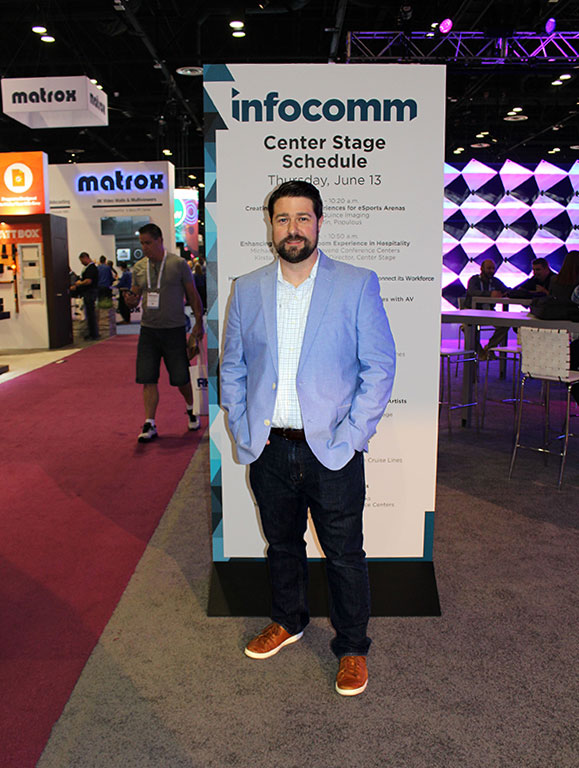AV Standards Improving Projects — and Changing Approaches
When Daniel Wright, LEED GA, signed on to be part of the revision task group for the Audiovisual Systems Performance Verification standard, he was already well-versed in the standard and the problems it was designed to solve.
“When the opportunity came up to update and modify the systems verification standard, I put myself forward,” says Wright, an Associate Principal at Shen Milsom & Wilke since 2017. “I believe that standards in the AV industry are extremely important. They legitimize us as an industry and they provide people who work in AV anywhere in the world, and newcomers to the industry, with a set of rules by which to operate.”
Part of Wright’s day-to-day work involves verifying that AV systems he and his team have designed work to their specifications. Having a standard to guide them and adhere to is invaluable, particularly when dealing with and educating clients.
 Daniel Wright, LEED GA
Daniel Wright, LEED GA
“When you can show that a standard is developed according to the requirements determined by a third-party like ANSI or ISO, it gives the client confidence that they are getting what is appropriate for their needs,” he says.
He and his team recently used the Audiovisual Systems Performance Verification standard, along with a number of other AVIXA standards, on a large training facility in Orlando for multinational accounting firm KPMG. The facility includes a private 800-room hotel to accommodate employees during their training. It was important for the client that users have the same experience whether in the office or the training center. “We used AVIXA standards to help our client build their global standards,” says Wright.
His participation in the revision task group is both a rewarding and a learning experience, particularly absorbing others’ points of view and seeing how his peers use the standard, he says. In the early stages of the process, the task group, which includes contributors from AV firms in the U.K., India, the Middle East, Australia, and North America, were introduced to a “design thinking” approach. This involved exercises identifying the real issues, prioritizing outcomes, agreeing on a timeline and making a variety of decisions about things like levels of importance and degrees of challenge for the goals they had set themselves.
“We met as a group and organized our goals with Post-it™ notes on a priority/effort timeline and produced something very poignant. It’s an interesting way to arrive at an end goal. The main objective is to figure out what the problem really is and then to test effective solutions, not to try to solve it right away without determining whether or not the solution is effective.”
It was the first time he had used design thinking, and he has since adopted it in a variety of situations, including client meetings. “You arrive at decisions much quicker and you get more buy-in from people,” he says. “The group understands that their individual needs, desires, and challenges have been heard, and they feel more comfortable that what you’re suggesting is an improvement. Coming from someone on the design side, it creates a situation where you actually spend less time iterating and reiterating your design, and more time defining what the actual goals are and developing a path to them.”
With the goals defined and the updates agreed on, the task group has moved onto the rewriting stage to ensure the standard reflects current technology, methodology, and the direction the industry is moving in.
Stay tuned for AVIXA’s public comment period for the revised Audiovisual Systems Performance Verification standard.
AVIXA Standards
Standards help you access new markets and increase your competitive advantage.
Learn more and download
Related Course
Interested in design thinking for your AV projects? Enroll in AVIXA's Design Thinking Virtual Workshop with Lisa Perrine, Nov. 12. It's completely online, so you can attend from anywhere.
Learn more and enroll



